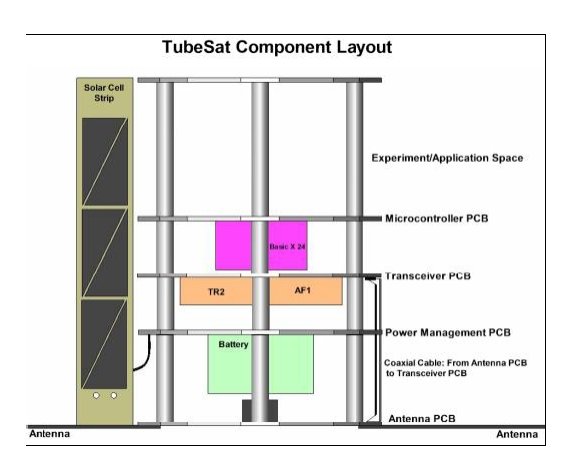This is especially important now that I'm fundraising. Bear in mind the fundraising gives you actual cool stuff-- mission patches and flight pins. Stuff is nice. Stuff is tangible. (Buy Calliope stuff!) The flight patches will remind you that you supported an independent space venture, whether it blows up or not. Also, given my tenacity, odds are good we'll find a way around setbacks. But the question remains-- what if IOS fails?
Geometrically, a Tubesat is a cylinder 9cm in diameter and 12.7cm long. A standard 1U Cubesat is 10cm x 10cm x 10cm. Therefore, a Tubesat, if trimmed, can fit neatly into a Cubesat. The main body of the Tubesat is easy to shorten simply by decreasing the size of the payload bay. I feel the bay generous already-- you can fit an entire guitar pickup in there. You can also tweak the spacers for the other section to push them to a closer tolerance.

The Tubesat solar panel are slightly more difficult to trim; there is perhaps 1.7cm of excess PCB you can safely cut without needing to refabricate. That still leaves a Tubesat solar panel at 11cm. To resolve this, it is simplest to create a new solar panel PCB that fits only 2x2 rather than 2x3 solar cells, and fabricate enough boards to fit all the cells. Since the surface area of the 10x10x10cm Cubesat is larger than the 10cm tube, there is plenty of extra room to place the additional panels.
In terms of complexity, the main Tubesat PCBs (power, transmitter, computer, your payload) are complex, while the solar panels are dirt simple. Also, the bulk of your satellite building time will be spent getting the payload sans panels to work. The solar panels, in terms of construction, are nearly an afterthought, placed on after everything checks out. Therefore, of all the parts to modify, the solar panels are the most trivial to resize.
The Tubesat2Cube mod starts with defining your Cubesat shell with the resized solar panels. You then attach your working, tested Tubesat payload within that cube. The extra height lost to the payload area can (much as with the solar panels) be made up for with the extra volume the Cubesat provides.
Conclusion: if IOS fails, just launch the Tubesat as a 1U Cubesat. It'll be more expensive ($40K and higher launch fees are typical), but it requires no payload modification, lets you make use of all the design, development and build effort already spent, and costs less than $400 in additional parts. As other companies enter the launch fray, even a Cubesat launch cost should drop further.
Back to my fundraiser, then, I have two answers to people hesistant to contribute for fear of IOS. First, all contributors get stuff-- one of a kind mission memorabilia. (Buy Calliope stuff!) So you're winning as soon as you contribute. Second, all risks can be mitigated if you plan in advance, and Project Calliope is always willing to adapt to the hazards and joys of our new age of commercial space.
(did I mention... Buy Calliope stuff!)
Alex
projectCalliope, converting the ionosphere to music




Comments